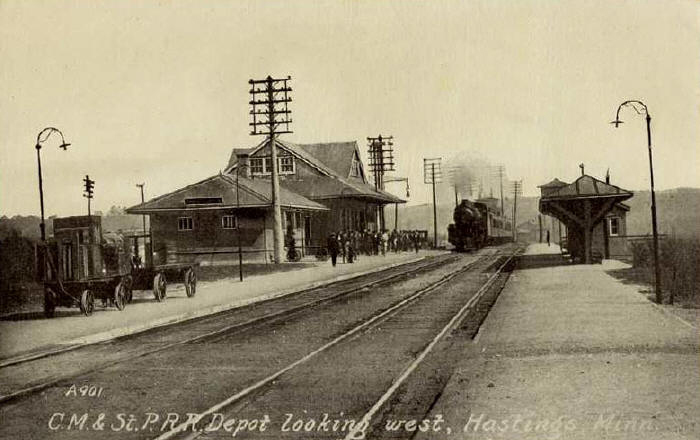First five stages complete in Red Rock project
Commuter rail service from Hastings to St. Paul may still be at least 10 years down the road, but the Red Rock Corridor Commission can check off the first of five steps in the process that will get them there.
Last Wednesday, April 6, the commission presented the final station plans for Hastings, Cottage Grove, Newport and Lower Afton in St. Paul. Next on the list of things to do is conduct an advanced alternatives analysis and draft an environmental impact statement. This next stage is expected to take roughly two years. After that, Red Rock will start working on preliminary engineering and the final environmental impact statement (which will take another two years), finalize the design (one year) and begin the three-year construction process.
The concepts for Hastings’ station and platform area hasn’t really changed since the last open house Red Rock held here last August. What has been added are more details, such as land use, trail connections, sidewalks and the piece so many have been wanting to hear: cost.
There are two stages of development expected for each of the stations. In Hastings, the short-term development (expected for the year 2020) includes introducing public transit and creating surface parking. Ideally, explained Tom Dobbs of Hay Dobbs, the architecture firm guiding the station plans, parking will shift to the north of Second Street as transit use grows. Long-term development (expected for 2040) would include a multi-level parking ramp north of Second Street.
Short-term costs are being estimated at between $2.5 and $3 million in Hastings. Extended out to long-term, the price tag rises to $15 to $20 million. The total cost would include the rail platform, transit plaza, ticketing and signage, pedestrian bridges, parking facilities, roadways, utilities and environmental restoration. The station itself would be publicly funded through a combination of federal, state, county and County Transit Improvement Board funds. Red Rock has not started the Federal Transit Administration’s New Starts process to obtain funds.
Nearby development – such as new storefronts along Second Street north of the station, housing developments and other structures included in the local station design would be funded privately. If private development happens as the station plans suggest, the new station could attract $56 million in private investments.
With one landmark reached in the project, those involved with the Red Rock Corridor Commission know they still have plenty of work ahead of them. Much of that is getting more people on board.
“We know we need to build ridership,” said Dakota County Commissioner and Red Rock Corridor Commission Chairman Joe Harris.
They’re convinced, however, that transit is necessary to accommodate growing populations, and that it will help local economies.
“This is really about jobs, and getting people to work and giving them places to work,” said Red Rock Corridor Commission Vice-Chair Jen Peterson of Cottage Grove.





